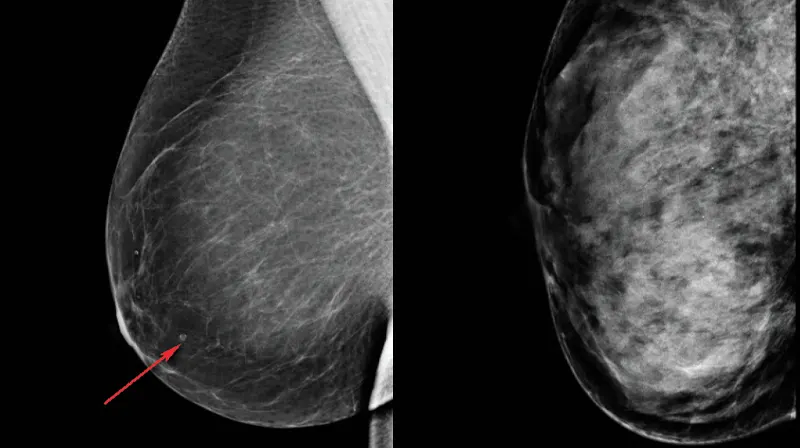Dense Breasts: What Does This Mean?
October 2015
Cyrus Khorrami, MD
Radiologist, Medical Director

A sad fact is one in eight women will develop breast cancer in their lifetimes. Digital mammogram remains the most effective screening tool we have to detect this disease. Part of the mammogram evaluation by the radiologist is describing the density of a woman’s breast. In February 2014, Governor Chris Christie signed a law requiring radiologists to inform women about their breast density when they have such tests. Many women are finding language in their mammography letters saying they may have dense breast tissue. As a result there has been many questions about what breast density means and how it impacts a woman’s health. Here are some of the more common questions I have been asked about this issue.
Q. What is breast density?
A. Breasts are made up of a mixture of fibrous tissue, glandular tissue, and fatty tissue. The glandular tissue is what produces milk. The fibrous and fatty tissue hold the glandular tissue in place, and they give breasts their shape. Your breasts are considered dense if you have a lot of fibrous or glandular tissue but not much fat. Density tends to decrease with age, especially after menopause.
Q. Why is breast density important?
A. Dense breasts make it more difficult for doctors to spot cancer on mammograms. The dense breast tissue blocks the x-ray beams and therefore dense tissue appears white on a mammogram. Unfortunately, cancer also appears white on mammograms. Trying to find cancer in very dense breast tissue can be like looking for a snowball in a snowbank. The sensitivity of breast cancer detection in mammograms of women with dense breasts may decrease by 10-20%.
Breast cancer develops in the glandular and fibrous parts of the breast. Patient’s with dense breast have lots of glandular and fibrous tissue and therefore having dense breast tissue may increase your risk of getting breast cancer. There is statistical evidence that indicates that women with dense breasts are four to six times more likely to develop breast cancer than women with fatty breasts and 17 times more likely to develop interval cancer (which is detected or presenting less than 12 months following a normal mammogram).
Q. How common is it for a woman to have dense breasts?
A. Approximately 50% of women have “heterogenously dense” breasts or “extremely dense” breasts.
Q. If I have dense breasts, do I still need a mammogram?
A. Yes. A mammogram is the only medical imaging screening test proven to reduce breast cancer deaths. Many cancers are seen on mammograms even if you have dense breast tissue. If a radiologist is suspicious of an area on a mammogram, the patient will be asked to come back for additional compression views. This is when a paddle is pressed on the breast to push the breast tissue away from an area of suspected cancer so it can been more clearly seen on the mammogram. Additionally, mammogram is the only test that can reliably detect suspicious calcifications.
Q. Are there any other tests I can do?
A. Dedicated breast ultrasounds in poorly seen or suspicious areas of the mammogram are among the most common and effective secondary tests performed. In my opinion, monthly self breast exams are an excellent way for a woman to take control of her breast health. It is important to become familiar with the way your breasts normally look and feel, and you can notice changes in the look or feel of your breasts. MRI is very sensitive in detecting cancer; however, often it can detect lesions that are not cancer and this can lead to unnecessary biopsies. Additionally, not all insurance policies will cover the cost of having a breast MRI. Tomosynthesis (also known as 3-D mammography) is gaining popularity, but it is still uses X-rays like a traditional mammogram and will still have limitations for women with dense breasts.
Q. What should I do if I have dense breasts?
A. The best first step is to talk to your doctor to determine if you truly do have dense breasts. Together, you can decide which, if any, additional screening exams are right for you. If your breasts are not dense, other factors may still place you at increased risk for breast cancer — including a family history of the disease, previous chest radiation treatment for cancer and previous breast biopsies and genetic testing that show you are high risk. Talk to your doctor and discuss your history. Even if you are low risk, and have mostly fatty breasts, you should still have an annual mammogram starting at age 40.